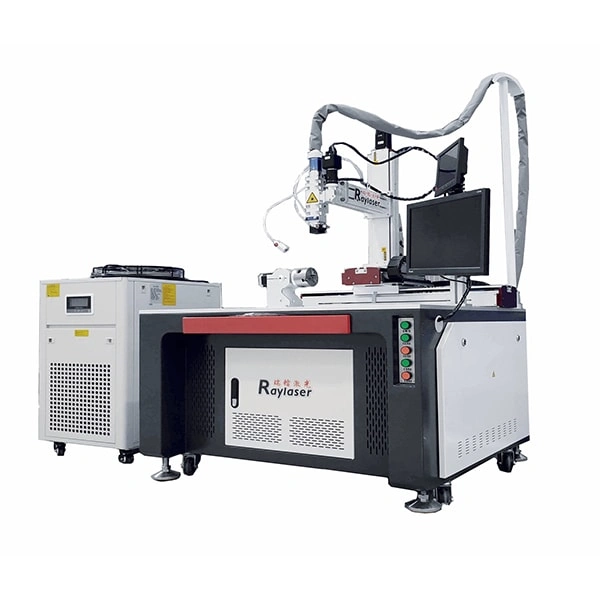Laser welding common defects and solutions
Laser welding is an efficient and precise welding method using a high energy density laser beam as a heat source. Nowadays, laser welding is widely used in various industries, such as: electronic parts, automobile manufacturing, aerospace and other industrial manufacturing fields. However, in the process of laser welding, it is inevitable that there will be some defects or inferior products. Only by fully understanding these defects and learning how to avoid them can the value of laser welding be better utilized.

10 common laser weld defects, their causes and solutions are as follows:
1. Welding spatter
Laser welding produces spatter that seriously affects the surface quality of the weld and can contaminate and damage the lens. General performance: after the completion of laser welding, the material or workpiece surface appears many metal particles, attached to the material or workpiece surface.
Reason for spattering: the surface of the processed material or workpiece is not cleaned, there are oil stains or pollutants, or it may be caused by the volatilization of the galvanized layer.
Solution:
A. Pay attention to clean the material or workpiece before laser welding.
B. Spatter is directly related to power density. Appropriate reduction of welding energy can reduce spatter.
2. Crack
Cracks produced by continuous laser welding are mainly thermal cracks, such as crystal cracks, liquefaction cracks and so on.
The reason for cracking: mainly due to excessive contraction force before the weld is not completely solidified.
Solution: filler wire, preheating and other measures can reduce or eliminate cracks.
3. Pores
Weld surface porosity is more likely to occur in laser welding defects.
The reasons for porosity:
A. The laser welding molten pool is deep and narrow, and the cooling rate is very fast. The gas generated in the liquid molten pool is too late to overflow, which can easily lead to the formation of porosity.
B, the weld surface is not cleaned, or galvanized sheet zinc vapor volatilization.
Solution: Clean the surface of the workpiece and the surface of the weld before welding to improve the volatilization of zinc when heated. In addition, the direction of blowing will also affect the generation of porosity.
4. Bite edge
Bite edge is defined as: the weld and the base material is not well combined, there is a bevel, the depth is greater than 0.5mm, the total length is greater than 10% of the length of the weld, or greater than the length required by the acceptance criteria.
Bite edge reason:
A, the welding speed is too fast, the liquid metal in the weld will not be redistributed on the back of the small hole, forming a biting edge on both sides of the weld.
B, the joint assembly gap is too large, the molten metal in the joint filler is reduced, also prone to edge biting.
C, at the end of laser welding, if the energy drop time is too fast, the small hole is easy to collapse, which will also cause localized biting edge.
Solution:
A. Control the laser welding machine to match the processing power and speed to avoid biting edges.
B. For the weld edge biting found in the inspection, it can be polished, cleaned and repaired to meet the requirements of the acceptance standards.
5. Weld seam buildup
The weld is obviously overfilled and the weld is too high when filling.
Reason for weld buildup: too fast wire feed or welding speed is too slow.
Solution: Increase the welding speed or reduce the wire feeding speed, or reduce the laser power.
6. Welding deviation
The weld metal does not solidify in the center of the joint structure.
The reason for this situation: inaccurate positioning during welding, or filler welding time and wire alignment is not accurate.
Solution: Adjust the welding position, or adjust the filler welding time and the position of the wire, as well as the position of the lamp, the wire and the weld.
7. Weld depression
Weld depression is the phenomenon of depression on the surface of the weld metal.
The cause of weld depression: brazing, the center of the weld spot is bad. The center of the spot is close to the lower plate and deviates from the center of the weld, resulting in partial melting of the base metal.
Solution: Adjust the light wire matching.
8. Poor weld molding
Bad weld molding includes: bad weld ripple, uneven and untidy weld, uneven transition between weld and base material, bad weld, uneven weld.
Reasons for this situation: when the weld is brazed, the wire feed is not stable, or the light is not continuous, etc.
Solution: Adjust the stability of the equipment.
9. Welding channel width
Weld channel means: when the trajectory of the weld varies greatly, the corners are prone to weld channel or uneven molding.
Cause: Large variation of weld trajectory, uneven modeling.
Solution: weld under the best parameters, adjust the angle of view, so that the corner is coherent.
10, surface slag
Surface slag refers to: in the welding process, from the outside can be seen in the skin slag mainly between the layer and layer.
Surface slag slag cause analysis:
A, multi-layer multi-pass welding, the interlayer coating is not clean; or the previous layer of the weld surface is not flat or the surface of the weldment does not meet the requirements.
B, welding input energy is low, welding speed is too fast and other welding operation technology is improper.
Solution:
A. Select reasonable welding current and welding speed. Multi-layer multi-pass welding must be cleaned up the interlayer coating.
B. Grinding to remove the surface of the weld slag, if necessary, filler welding.
 +86 18663958101
+86 18663958101










